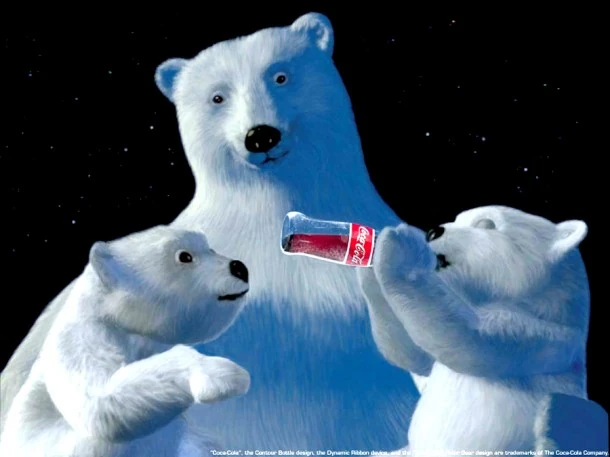
Rewriting the Rules: CAA, Coke, and the Polar Bear Play

What happens when a talent agency with no ad experience takes over Coca-Cola’s global campaign? Executive producer Mark Sitley breaks down the gamble that led to the creation of the beloved Polar Bears—and the $55 million idea they let go.
Q> First, can you give a bit of backstory?
Mark> In the mid-1990s Coca-Cola had rejected two years’ worth of creative work done by McCann Erickson. In an eyebrow-raising turn of events—one that the entire advertising industry thought was ridiculous—the talent agency CAA (Creative Artists Agency), run by Mike Ovitz, managed to convince Coca-Cola to let CAA develop new creative using the talent on its roster—whether as writers, directors, or musicians—across the board. That was their angle.
Q> But CAA wasn’t known for doing commercials, right?
Mark> Exactly. That’s what made this move so controversial. Pulling off a commercial campaign is certainly not an art or a discipline, but advertising is a craft that requires experience to know how to make it work. Just because you might be the director of a $100 million epic doesn’t mean you know how to tell a story in 30 seconds. And many talents at CAA did not.
So Coke told CAA it had to bring in some people they could trust to shepherd the production of whatever was going to be developed by their artists—primarily, we're speaking of directors. I had worked with one of the creative directors they hired, Len Fink, at Chiat Day, when I was head of production at the agency’s New York office. So I was asked to come out and take over this assignment.
Q> How does one start a multi-million dollar campaign?
Mark>I was given a budget not to exceed and was asked to try to deliver six or seven templates that could then be customised for parts of the world outside the United States. I hired two freelance producers, and we had a couple of months to pull this all off for the world.
The end result was that we produced what amounted to 28 templates — and I came literally a hundred dollars shy of the $15 million budget I had been asked not to exceed.
Q> Sounds like a massive challenge. How did “The Polar Bear” come about?
Mark> The biggest dilemma was: How do you market Coca-Cola—a drink that's refreshing and always going to look icy cold on a hot summer day—to the Islamic world? You can't show women celebrating. You can't show eyes. You can't show hands. You can't have people touch, etc.
The solution was to go the animation route. We got people out of the picture and then did the opposite of what you could do with actors: Enter the Polar Bears. In the Arctic, enjoying a Coke. And broadcast it into the middle of the desert.
Len Fink actually came up with the idea of animating polar bears, and then, as often happens with a creative producer, you hear an idea and run with it.
It translated well. In fact, it became iconic. To this day, 20 years later, it is still repeated.

Q> Is there anything you would have changed?
Mark> You can't predict these things. But if we had only known to say, “We’ll give you this commercial, but we’d like to retain the IP….” We later calculated the royalties—just from polar bear-themed products, let alone plush toys—were probably over $55 million.
Q> How important is the team in production?
Mark> Even if you have a great idea, the work won’t be great unless everyone comes into it with the right spirit. I've never known any production ever to have succeeded if one fly in the ointment was involved. If one negative person was involved.
If you're really good, you welcome everybody who has their own opinion about the work you're doing, and you pick them because you trust their opinions. They keep elevating the work, and so that spirit keeps parlaying itself.
Being a good producer is its own kind of creative work. You have to detect who's going to bring what to the party. You have to see who's got vision. You have to know who can roll with changes on the spot—not just to problem solve, but to say, “Oh, wait! This could be better.” There's just a lot of fun in that. It’s the key to success.










